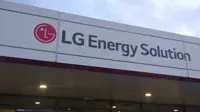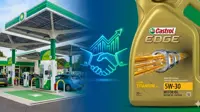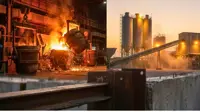Indian company supplies radioactive elevator buttons to Otis in France
08 Nov 2008
France's Nuclear Safety Authority (ASN) has found elevator buttons used by Otis and supplied by French company, Mafelec, using materials sourced from an Indian supplier, who had handled these buttons, had exposed 20 French workers to excessive levels of radiation.
Mafelec, whose factory is located in east-central town of Chimilin, informed ASN about radiation levels emitted by the elevator buttons, leading to an immediate inspection of the factory by the regulatory watchdog.
ASN found that the contaminated material, which had arrived in August and was used by Otis Elevator Co, contained faint traces of cobalt 60, a radioactive form of the metal cobalt in its elevator buttons.
The radiation had exposed 20 of the 30 workers at Mafelec, which had supplied the buttons to Otis, to a dose of between 1 and 3 millisieverts, an incident which is marked at level 2 on a scale of 7 on the International Nuclear Event Scale, due to the exposure of more than 10 people to doses exceeding the legal safe limits.
ASN said that the contamination posed no threat but has raised the alert level as a precautionary measure.
Investigations conducted by the Indian Atomic Energy Regulatory Board at the request of the French embassy, had named Bunts, Laxmi, SKM Steels, Vipras Castings, and Pradeep Metals as suppliers of products contaminated with cobalt 60 to many countries.
The investigation found out that Bunts and Laxmi Electronics, who had sold the buttons to Mafelec, had sourced the steel from SKM Steels, which in turn had obtained the raw material containing radioactive material from a foundry called Vipras Casting, which has its factory in Khopoli, the outskirts of Mumbai.
Vipras Casting recycles scrap, purchased from dealers who import steel scraps from Europe and the US and sells it to various steel companies in India.
As it had sold 10 tonnes of steel to SKM Steels, which was used it to manufacture the elevator buttons, it was unable to tell at the moment where this lot of scarp came from.
The 20 workers at Malafec who were exposed to radioactive radiation have not reported any sickness but have been hospitalised for tests.
Mafelec Gilles Heinrich, the chief executive of Mafelec underplayed the incident, saying there was nothing toxic and there was no need to panic and added that many companies do receive such parts but do not detect them.
The French arm of the US elevator maker Otis said that it would replace all buttons in 500-600 elevators repaired between August and October throughout the country.
The Atomic Energy Regulatory Board and labour ministry is now trying to identify Indian workers who could have been exposed to the radioactive material right from the source of the raw material to the finished product.
In India, factories that handle imported steel scraps are not required to install radiation detectors to check scrap, but the government has a programme to put radiation monitors at ports to check cargo. Vipras, shaken by the incident, has installed radiation monitors to check radioactive emission on the steel scraps that enter its premises.
Experts believe that the cobalt 60 could have come from different countries, which supply scrap metal to Indian firms for recycling.
These included parts from decommissioned nuclear reactors, hospital radiation equipment, foreign ships sent to Indian ports for dismantling or the hulls of foreign nuclear submarines.
One commentator said that some western countries have been dumping their toxic wastes in India, with the Indian government having turned a blind eye. This time, the material has gone back to the western country.
India does not have strict enforcement to check radioactive hazardous waste from entering the scrap market and also lacks facilities for the decontamination of scrap.
Recycled steel was in great demand till a few months back as steel prices rose in the international market. The Indian steel scrap recycling business is estimated $50 million and Indian recycled steel is in great demand in the West following the steep rise in international prices.
The ship-breaking industry in India is another source of radioactive contamination entering the country. Alang in Gujarat, the second biggest such yard in the world, regularly dismantles hundreds of ships with more than 30 ships in the range of 3,000 to 15,000 tonnes having arrived at Alang for dismantling in the past two months.
Meanwhile the Swedish government said that the steel items imported from India and delivered to four factories in Sweden had showed faint traces of radioactivity, but it was not recalled since the levels of cobalt 60 in the steel were considered not harmful.






















